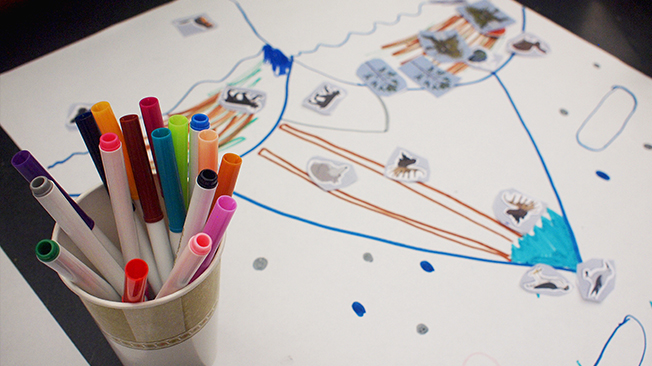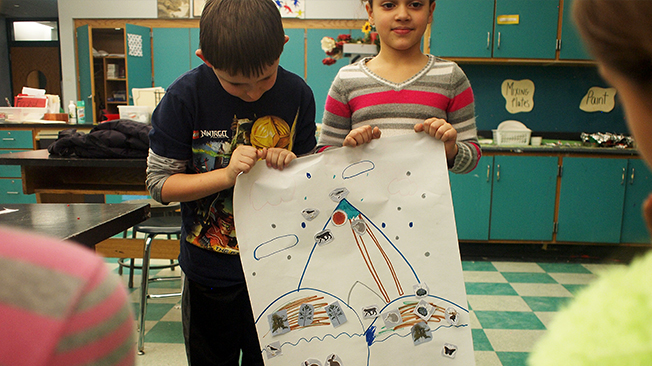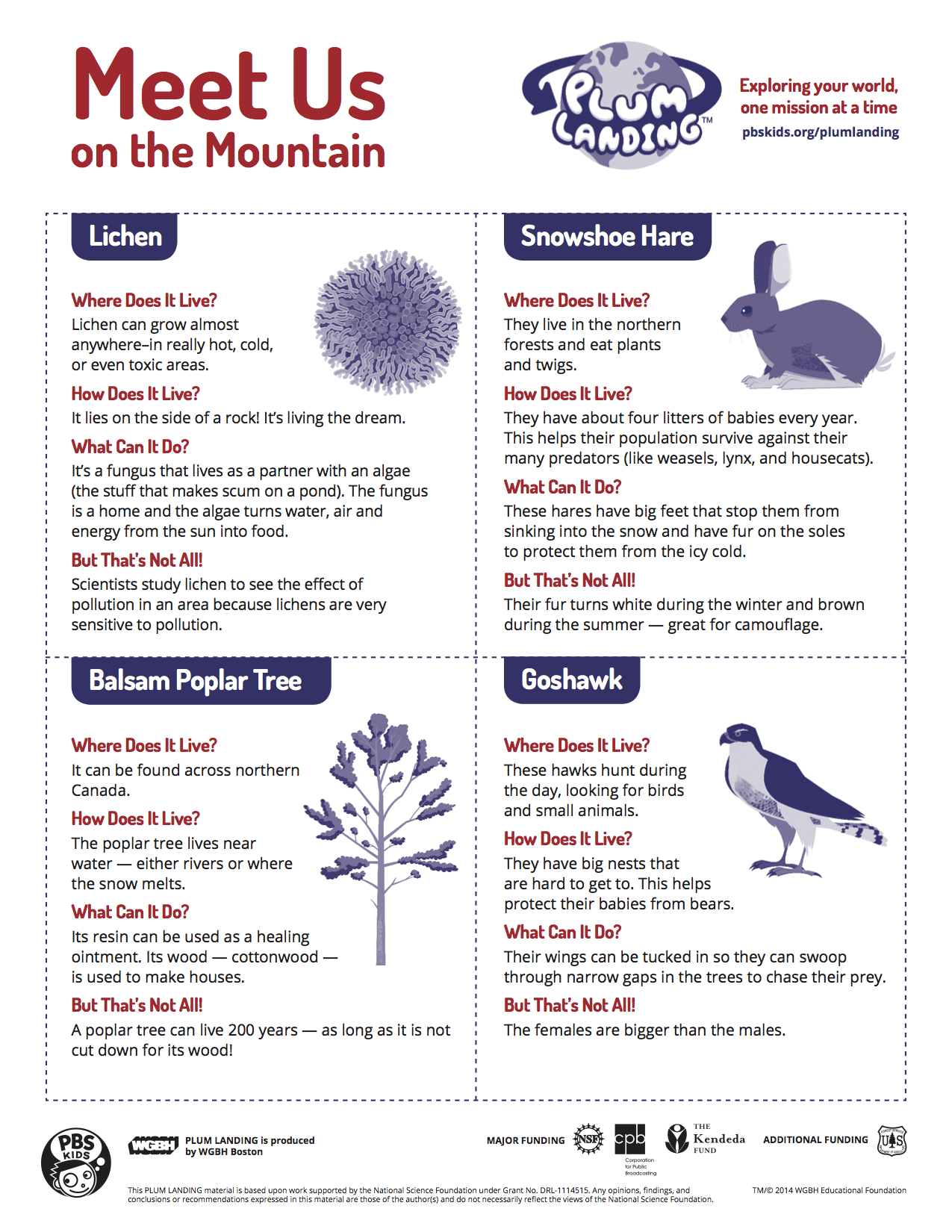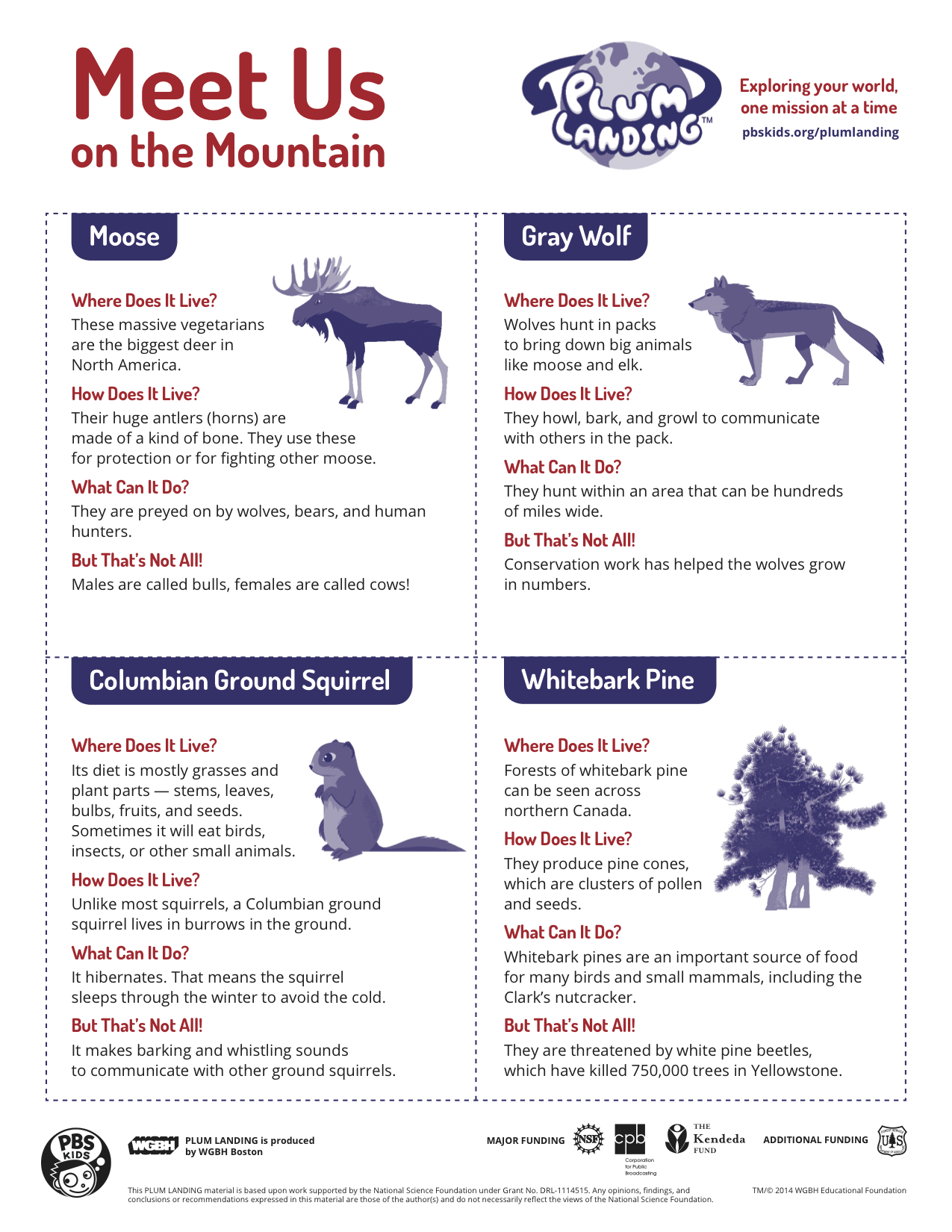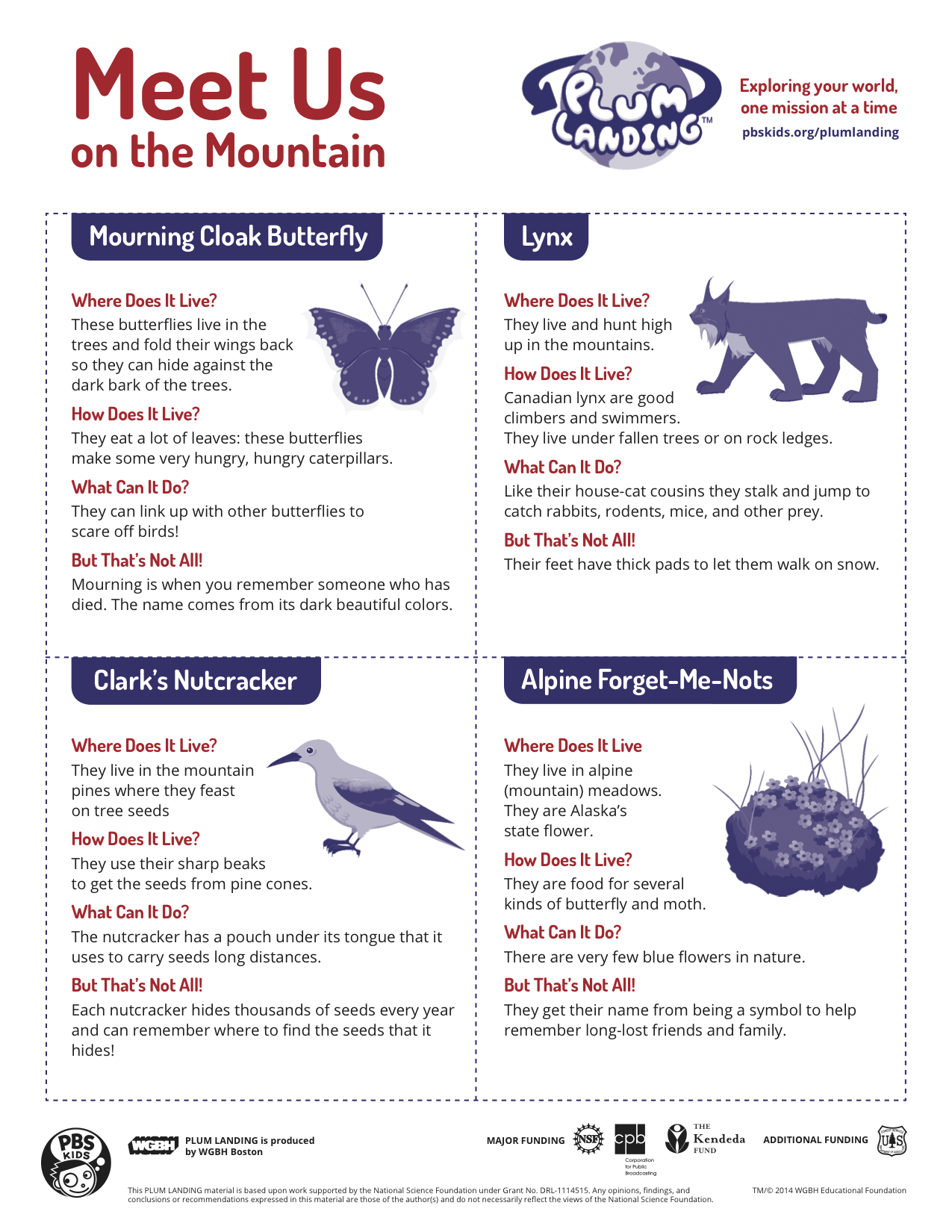Pin the Moose on the Mountain
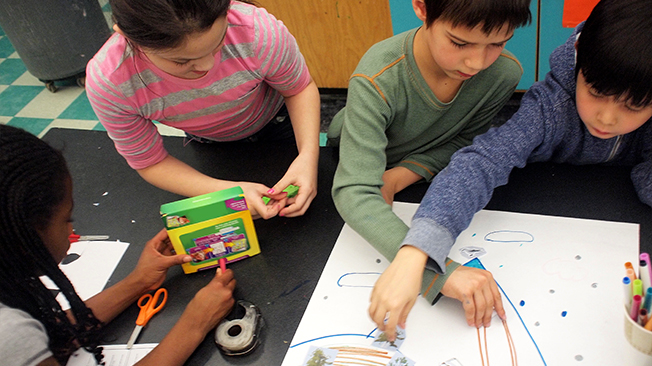
What Is This Activity?
Imagine starting your day strolling through a warm, leafy forest and ending it walking on ice and snow. Where are you? On a mountain! In this mapping activity, kids make predictions about food webs on a mountain, from the bottom to the top. Then they annotate a large mountain map with drawings of these plants and animals, creating a visual picture of a mountain ecosystem.
Introduction
-
-
00:00
What Are Kids Learning?
- Different areas support different kinds of living things, both on land and in water.
- An ecosystem is a place that contains living things, like people, plants, animals, and fungi, and nonliving things, like soil, rocks, and water. The living things and nonliving things in an ecosystem interact with each other.
- Different locations on a mountain receive different amounts of sunlight and precipitation and vary in temperature.
- The plants and animals that live in a mountain habitat reflect the local climate, including rainfall and temperature.
How Do You Get Ready?
- Read the activity and gather the materials.
- Print enough copies of the handout for each pair of kids, plus one for yourself.
Warm-up 10 minutes
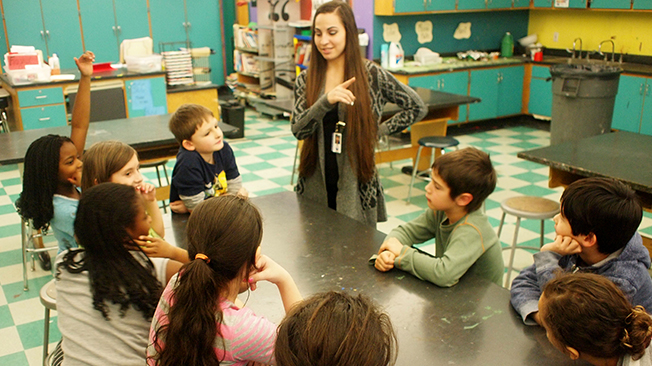
Ask:
- Where do you think you might be if you could start your day strolling through a warm, leafy forest and end your day walking on bare rocks, possibly covered in ice and snow?If kids seem stumped, give them the hint that, for the whole day, you would be walking uphill.
- How is a mountain different from where we live? How might it be similar to where we live?
- How might the plant and animal life look different as you travel from the bottom of a mountain to the top?In general, the climate becomes cooler and drier as you climb a mountain. Less water and cooler temperatures support fewer plants. So as you increase elevation, the plants get smaller and you will see fewer animals.
Activity 40 minutes
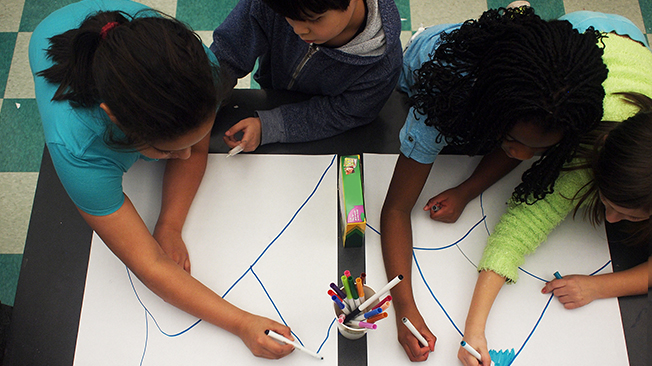
Part A Imagine Mountains
Have kids work in pairs to draw the outline of a mountain on a sheet of poster paper
Ask:
- How do you think the bottom of a mountain looks, compared to the top?
- What do you think the climate is like at the top of a mountain? The bottom?
- How might sunlight, temperature, and rain or snow affect the plants and animals on different parts of a mountain?
Next, hold up the "Meet Us on the Mountain" handout. Point to each organism and ask kids to predict what it might eat, and what, if anything, might eat it.
Ask:
- What does this animal need to eat?
- What does it need to make a home for itself?
- If it eats other organisms, what do those organisms need to survive?Kids may need some guidance here. Give them a few minutes to think about which animals eat plants and which animals eat animals that eat plants. The snowshoe hare, ground squirrel, bighorn sheep, moose, and Clark's nutcracker all eat plants (some also eat insects). The lynx, wolf, and goshawk all eat animals that eat plants. Whitebark pine, alpine forget-me-nots, and balsam poplar are all plants. The lichen, which grows on rocks at the peak of a mountain, is part plant and part fungus. It is an important food source to many plant-eaters in a mountain ecosystem.
- Where do the plants on the mountain get their energy?From the sun

Part B Pin the Moose on the Mountain!
- Distribute the "Meet Us on the Mountain" handout and craft supplies.
- Tell kids they are going to build their own mountain ecosystem, starting with the organisms on the handout.
They should:
- talk with their partners about where they might find each organism on the mountain;
- cut out each organism on the handout;
- tape or glue their cutouts in the region of the mountain where they expect each one lives;
- using crayons, markers, and craft supplies, make additional plants and animals to fill in the mountain. Kids should replicate the plants and animals from the handout-they shouldn't simply draw other plants and animals they may think of.
Encourage kids to think about food webs as they build their mountain ecosystems.
Ask:
- What might the wolf eat?
- What might the ground squirrel eat?
- Can there be more wolves than ground squirrels? Why or why not?There cannot be more wolves than ground squirrels. In fact, there need to be a lot more ground squirrels than wolves. Wolves depend on ground squirrels for their food. They must eat lots of squirrels in order to get the energy they need- If there are more wolves than squirrels, the wolves will quickly eat all the squirrels and will then run out of food.
Wrap-up 10 minutes
Have kids tape their mountains to the wall. Give them a few minutes to do a "gallery walk," in which they view one another's creations. Then reconvene the group and give each pair a chance to present their mountain and explain how they decided where to place their plants and animals. While pairs are presenting, talk about the relationships among the organisms on their mountains.
Be sure kids understand that plants make up the base of any ecosystem. This means that all the animals that live in an ecosystem, even the ones that eat other animals, depend on plants for their energy. Animals that eat other animals often eat animals that eat plants. A wolf, for example, may eat squirrels. Squirrels eat nuts, berries, and other parts of plants. Wolves then depend on plants since they provide squirrels the food they need. What might happen to the ecosystem if it had more predators than plants?
Explore Some More
Map Your World
Brainstorm with kids about animals they frequently see in the neighborhood or around the school. Consider the habitat needs of each species. For example, where might a bumblebee find food? Where does it go when it's raining? Walk around your building or neighborhood and identify different kinds of habitats. These might be open spaces such as sports fields or parking lots; plants such as shrubs, flowers, or grass growing next to to your building; or yards with trees or gardens in them. Have kids predict what kinds of animals might live in each place. Then have kids create and annotate maps of your neighborhood, showing the location of different kinds of habitats and the kinds of plants and animals they might find in each one.
Mighty Moose
Tell kids that, as a group, they're going to model how moose use the resources in a mountain ecosystem, and how changes in these resources affect the number of moose that can live there. Explain that in this game, moose are looking for food, water, or shelter. Have kids stand in two lines facing each other. Explain that the kids in one line are moose, looking for food, water, or shelter. The kids in the other line represent those resources. Show kids how to make the symbols for each: for food, they should hold their hands over their stomachs; for water, they should cup their hands together as if holding water in them; for shelter, they should tent their hands over their heads, making a roof. Have the kids in each line turn so that now they have their backs to each other. Explain that each kid in the moose line should decide if he or she is looking for food, water, or shelter, and should hold his or her hands in the posture for that resource. Each kid in the resource line should decide which resource he or she wants to be.
On the count of three, say "Mighty Moose!" and have kids turn around, keeping their hands in position. Moose who see the resource they need should run to it and link elbows. Because these moose found the resources they needed, they survive and reproduce. They should return, with their resource, to the moose line. Any moose that don't find their resources do not survive. They then become resources themselves, and should go stand on the resource line for the next round of the game. Play about 10 rounds of the game, and keep track of how many moose survive each round. At the end of the game, talk about any patterns kids saw between the number of moose and the availability of resources.

